I spent October planting and preparing for next year in the garden both in Old Spa Road and in Croatia , picked olives along the way and was reminded that gardening is an artificial intervention with nature where we try as gardeners to “improve ” nature … a bit presumptious don’t you think ?!
An October walk in the Biokovo mountains , Gornja Podgora , Croatia
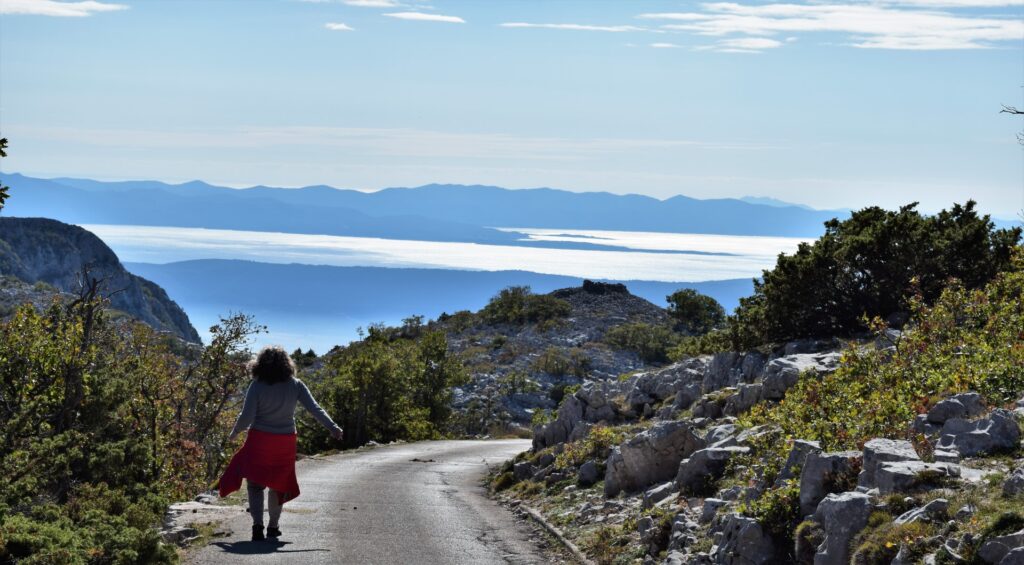
My very first gardening blog was written and published eight years ago in October 2013 and here is an extract with all the hopes and aspirations for garden schemes and beds and fast forward eight years and nothing has changed , still aspiring and still hopeful !!
This week in the garden 25th October 2013
October is the season for tidying up , shifting trees and shrubs , dividing perennial plants which is what I have been doing all week . I moved the remaining five apple trees from the top field from their original site as I feel it is drier in the new location , a matter of about 15 meters but a meter can sometimes inexplicably make a difference as to whether a plant thrives or just stays alive and in the case of these apples I feel the wetness was causing them to stand still , we shall see as trial and error is a given in the garden especially this one where wetness is a problem .
My main work though this month is planting perennials that gardening friends have been dividing in their own gardens as they thin out perennial beds and very glad I am to be the recipient ! Mostly rodgersia, darmera, astilbe and bamboo which suit the wet areas here at Petrovska Garden and I am delighted to bulk up my own plantings with these treasures some of which like the darmera and the rodgersia podophylla can be difficult to find in garden centres .
I have also been planting daffodils in bulk , a few tulips , some crocus which although the proper planting time is still a bit early for me as I normally wait for the bulb sales in mid November which makes economic sense for me as I plant anything up to 1000 bulbs mainly daffodils each autumn . I dig my planting holes just beside either in front or to the side of established trees or shrubs rather than pick an empty space where I might want to plant a shrub at a later time . It may be that I am getting a bit more specialist this year as I am going for named species rather than bulk planting of supermarket bulbs . I don’t plant a lot of tulips as in my heavy soil they very rarely come back a second year and to be honest although I admire tulips in other people’s gardens but for me I find the wind knocks the hell out of the petals .
That was eight years ago , the garden and I were eight years younger so a lot has changed !
I was trying to build up our spring bulb collection in those early years of the garden but now I would only plant two hundred or so bulbs every October and I concentrate on the smaller flowering bulbs and increasing our rarer varieties such as alliums , snow drops and camassias . While down sizing in the spring bulb area I have increased an obsession with weeding and keeping all bare earth free of spontaneous growth that I don’t approve of , again in opposition to nature that doesn’t differentiate between “good ” weeds or “bad ” weeds … so where to draw the line as on the one hand the weeds will dominate and take over the garden if I don’t intervene so there must be a balance and while as gardeners we pride ourselves on being close to nature and having natural gardens … no such thing my dears it is all presumption and a touch of arrogance on our parts .
If we achieve a balance with nature in our gardens then the gardens will look different as it is in life where the strong thrive and the weak merely survive so it will be in the garden where thistles and docks will jostle with roses and grass lawns will be full of creeping buttercup and end up overgrown with couch grass , not a good look you will agree so keep the hoe and the spade close at hand and we can pretend we are giving nature a hand !
As I said all gardening is an artificial intervention , none more so then the current obsession with so called “ wild gardening ” which is everywhere from the Chelsea Flower Show just ended last month to your local Co. Council who are obsessed with wild flowers and rewilding road sides . My own attempt at a wild flower meadow has been a total disaster so far for the past two years as our wet retentive soil is full of long grass and docks so this winter I am going to heavily intervene and give nature a helping hand by first cutting off everything to ground level with a strimmer , raking it off then spraying all the remaining growth down to bare soil in the designated area and finally with a bare canvas to work on I will try and source a wild flower mix designed especially for wet ground if there is such a thing … watch this space !
A small shrub not really mentioned these days in gardening articles or recommended for planting schemes is the yucca and it seems to have fallen out of favour over the last twenty years , partly this may be down to the fact that the yucca has spiky tips on it’s leaves which can be dangerous for children and it is not called Spanish dagger for nothing ! I have always loved the yucca as a terrific all year foliage plant which looks really dramatic . It will grow well in Ireland as longl as the ground is not water logged , nothing kills yucca as much as bad drainage and it is perfectly hardy but at it’s best in desert or Mediterranean areas where it loves baking hot soil and can tolerate drought for months .
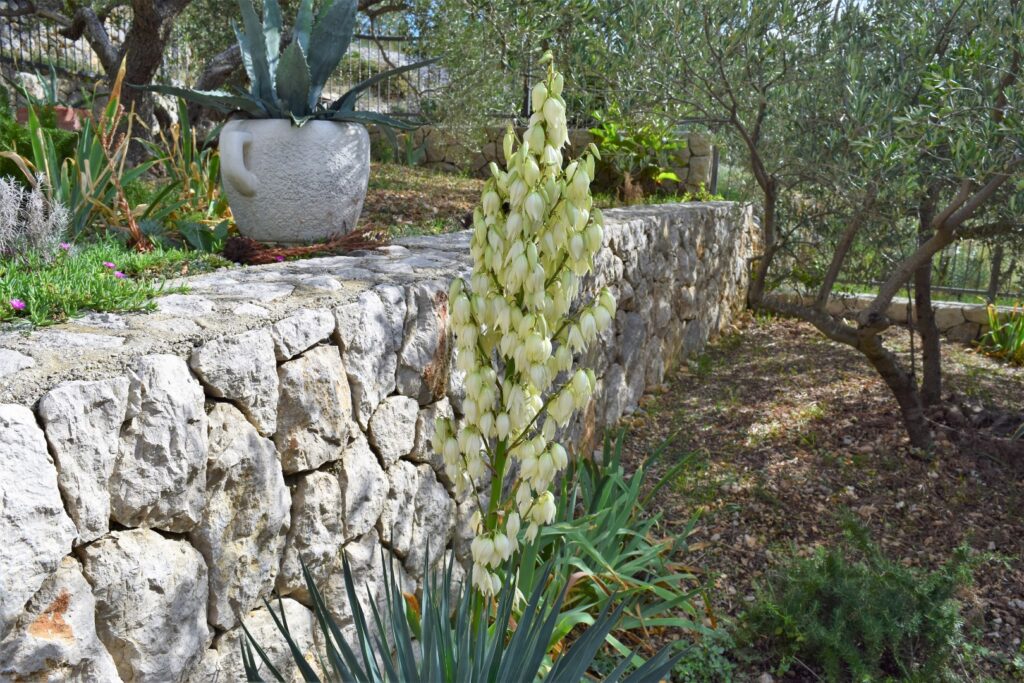
I grow it in Croatia both in open ground and in pots where it does particularly well and you can basically forget it and it will thrive and flower it’s socks off every October and as an example of how it survives builders dug one out of the ground to make room for a new wall a few years ago and just left it lying around for almost five months when I found it and buried it up to it’s neck , gave it a good watering for a few weeks and off it took and is growing strong ever since .

Growing up in the Ireland and UK of the 1950’e and 60’s olive oil was unknown in cooking or eating terms and my first introduction to it would have been with an ear ache where my Mam would have a little bottle bought in the local chemist’s shop and heated olive oil would be tipped with a spoon into your ear which was then topped off with cotton wool to keep it from running down your neck … olive oil for salads was unheard of in Ireland when I was growing up and we used Chef Salad Cream for salads which we considered very posh and on my first trip to Greece in 1974 I was horrified by the amount of olive oil that came on all our Greek salads and I remember once in Delphi going into a restaurant kitchen to say go easy on the olive oil only to see a black dressed Granny upending a bottle of oil into my salad and hearing the bottle go glug glug … she gave me a look that stopped me in my tracks and that said don’t mess with the Nana … I have embraced olive oil ever since !
Late October in Dalmatia ( the narrow strip of land that runs the length of Croatia’s adriatic coast from Slovenia to Montenegro) is the beginning of the olive harvest and entire families gather from home and abroad to help with the picking . It is a tradition that goes back two thousand years to Roman and Phoenician times to when olive oil production was first started in what is now Croatia . Traditionally the olive oil produced was for each family’s private consumption and a small amount was sold to tourists at local markets but in the past twenty years Croatian olive oil , still mainly picked with traditional methods , has become a thriving commercial industry regularly winning gold medals in international competitions around the world .
It is hard work picking olives by hand which is mostly the case in Dalmatia as the trees are grown up along hill sides where it is not possible to use machines and it is in most cases a family event with everyone from Grandma down lending a hand . Family members living abroad wherever they are in the world … the croats like the irish have always gone abroad as emigrants … they often arrange their holidays to be home in late October to help with the harvesting and this connects them with their homeland , it’s traditions and a share in the lovely olive oil as like with every produce your own home made tastes much better !
We grow our olives in a small grove of fourteen ancient trees and learn from the locals in Gornja Podgora every year on how to keep the trees healthy by pruning and fertilizing with natural products such as sacks of goat poo from the Biokovo mountains and absolutely NO pesticides are allowed among the olive trees in case the chemicals leeches into the olives .
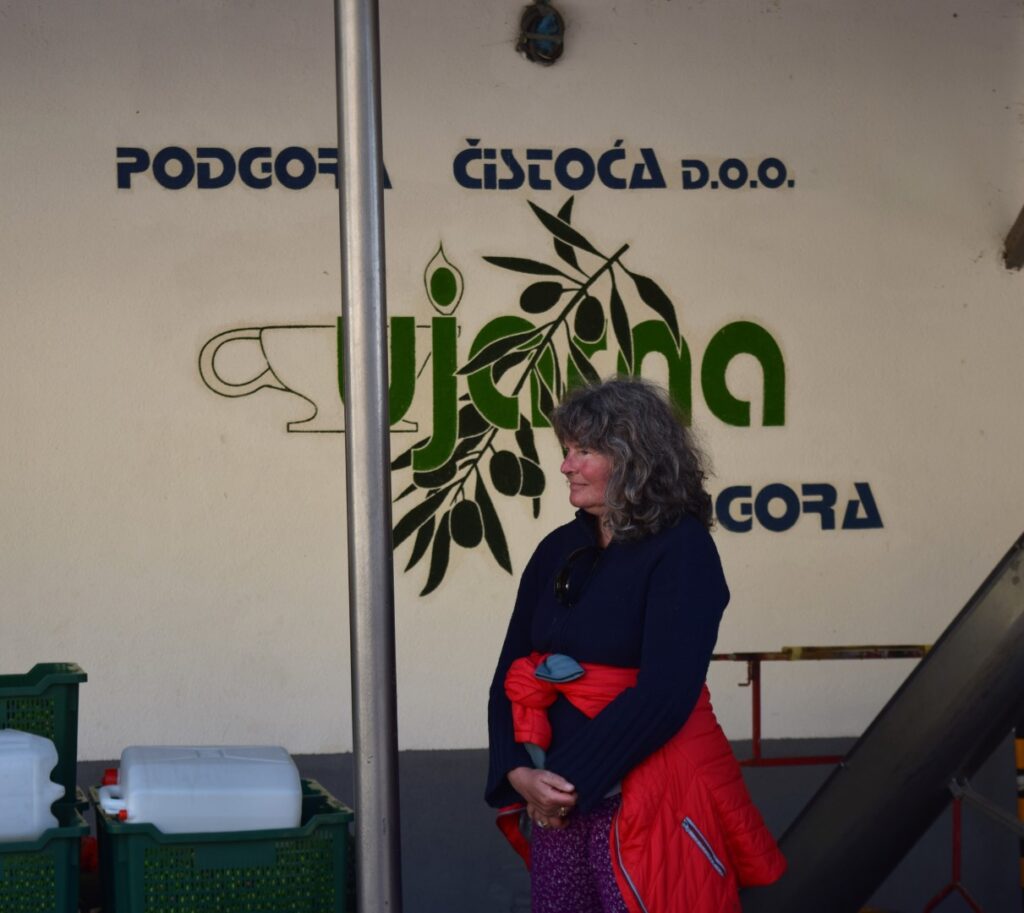
Standing around at the local olive mill when your olive processing slot is allocated is a great source of information and even with such a small production as ours you are still given the same attention as your neighbour with 300 trees … although I have noticed that almost everyone you ask has at least 300 trees but as Snezana says there are probably 25 people sharing those trees ! This year we met people home from Germany, Austria and Holland for the harvest and learnt that even though you might have 300 trees it depends on how young and fit you are to properly look after the trees throughout the year as this will determine the amount of olives you collect , trees that are not looked after quickly become feral with a thicket of branches and will be difficult to pick from and the yield will be much much lower .
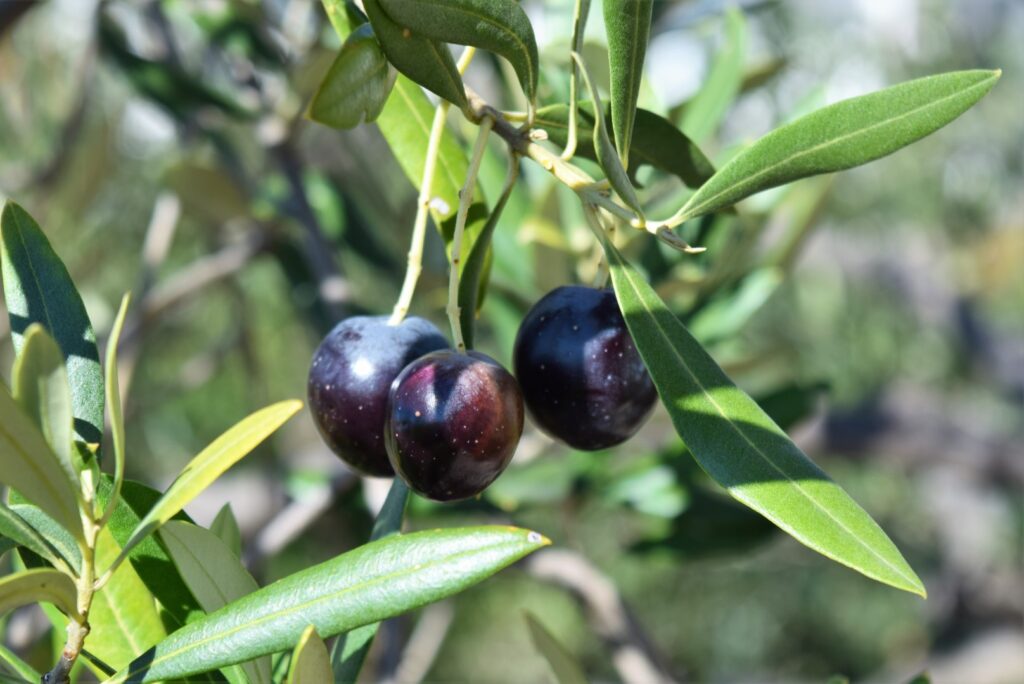
We picked the olives over a two day period on 17th /19th October , which is an early harvest just when the olives are at their late green stage about to turn blue/black , when the olives are blushing as they say locally, as this provides the healthiest and the most flavoursome olive oil. We store them in crates and this prevents the olives from crushing and ideally the olives go to the mill at the most 48 hours after picking …any later and the olives need to be stored in water . It is intensive back breaking work as we hand pick all the fruit , no whacking or raking of branches or spreading sheets under the tree to catch the olives that fall in the picking process and up and down ladders like yo yo’s … we have only fourteen trees so I can only imagine the effort that goes into hand picking 300 trees … after a few hours the novelty of picking your own olives goes out of it and it becomes pure slog and one’s thoughts drift towards a chain saw for next year but when it is all over and you see YOUR olives being washed and crushed at the mill and that magic moment when the first golden liquid pours out … well it is magical … roll on next year again !
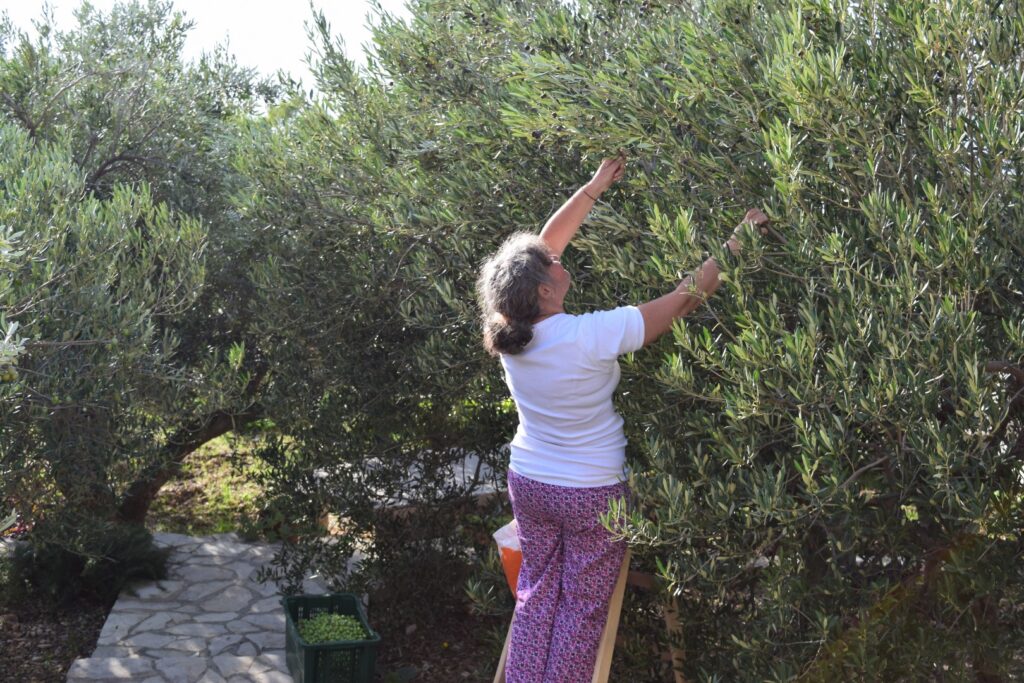
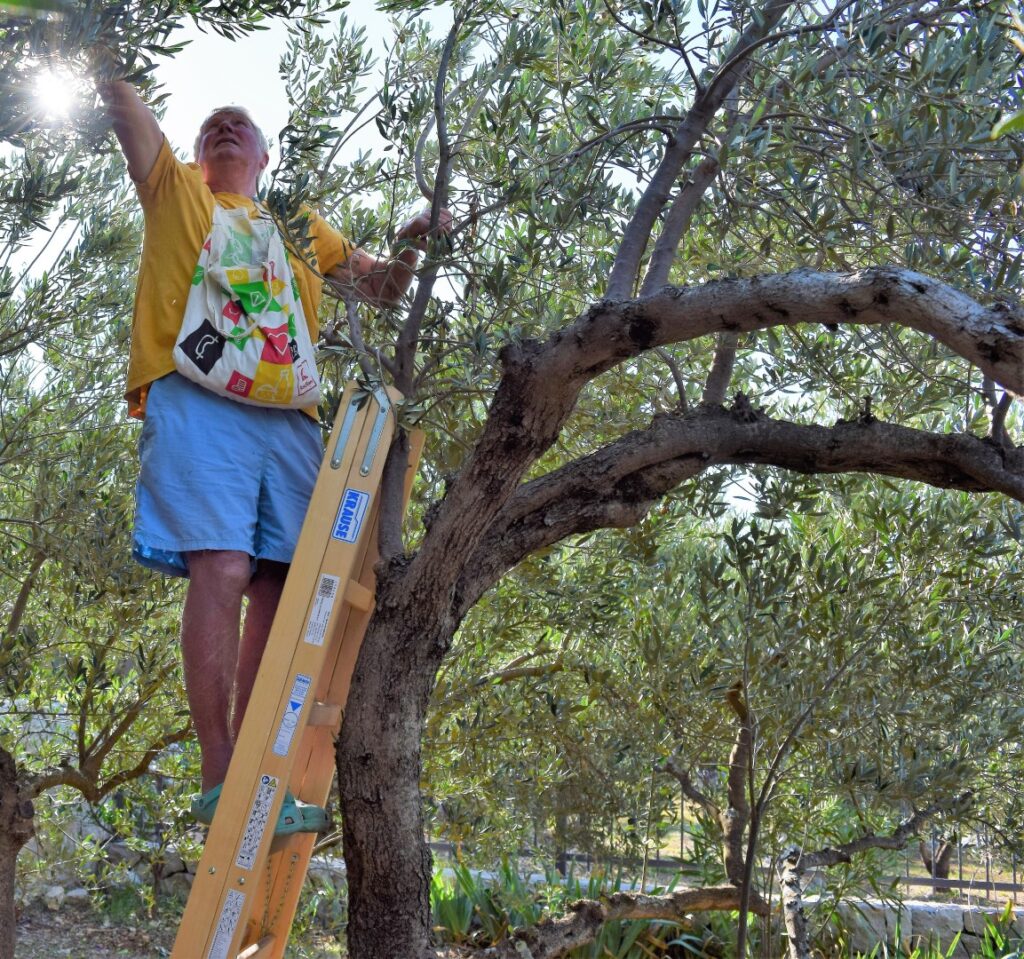
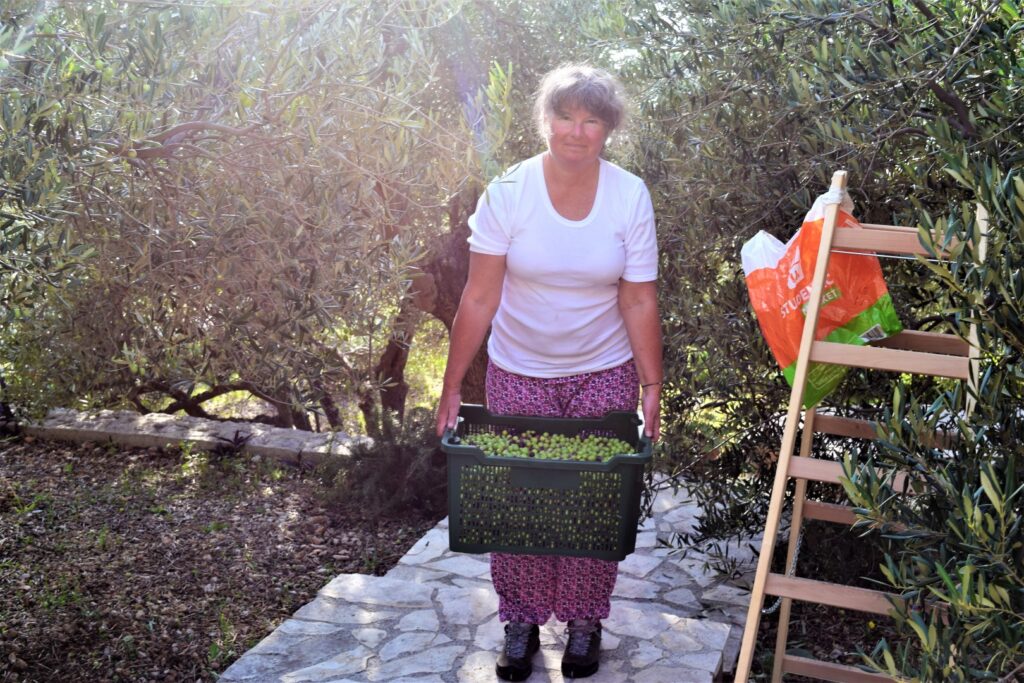
This year we collected almost as much olives as our best season two years ago , 135 kgs of olives which after processing gave us back 18 litres of Eamonn & Snezana ’s Extra Virgin !
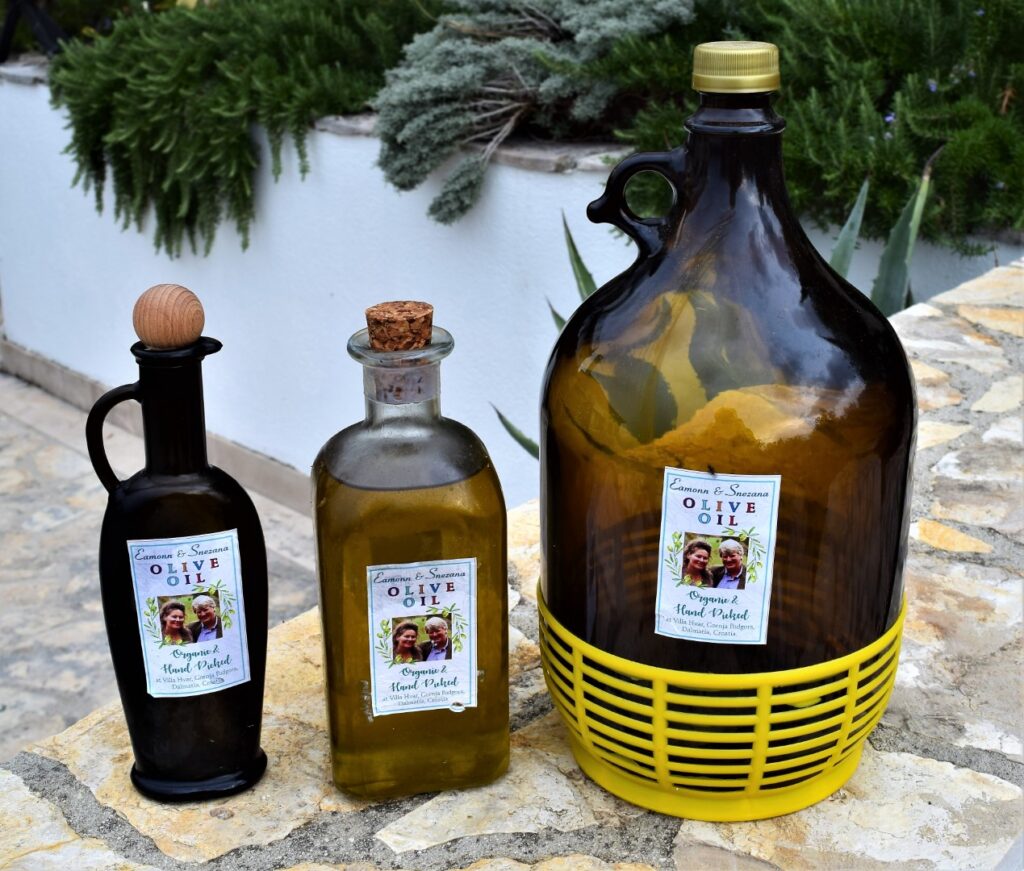
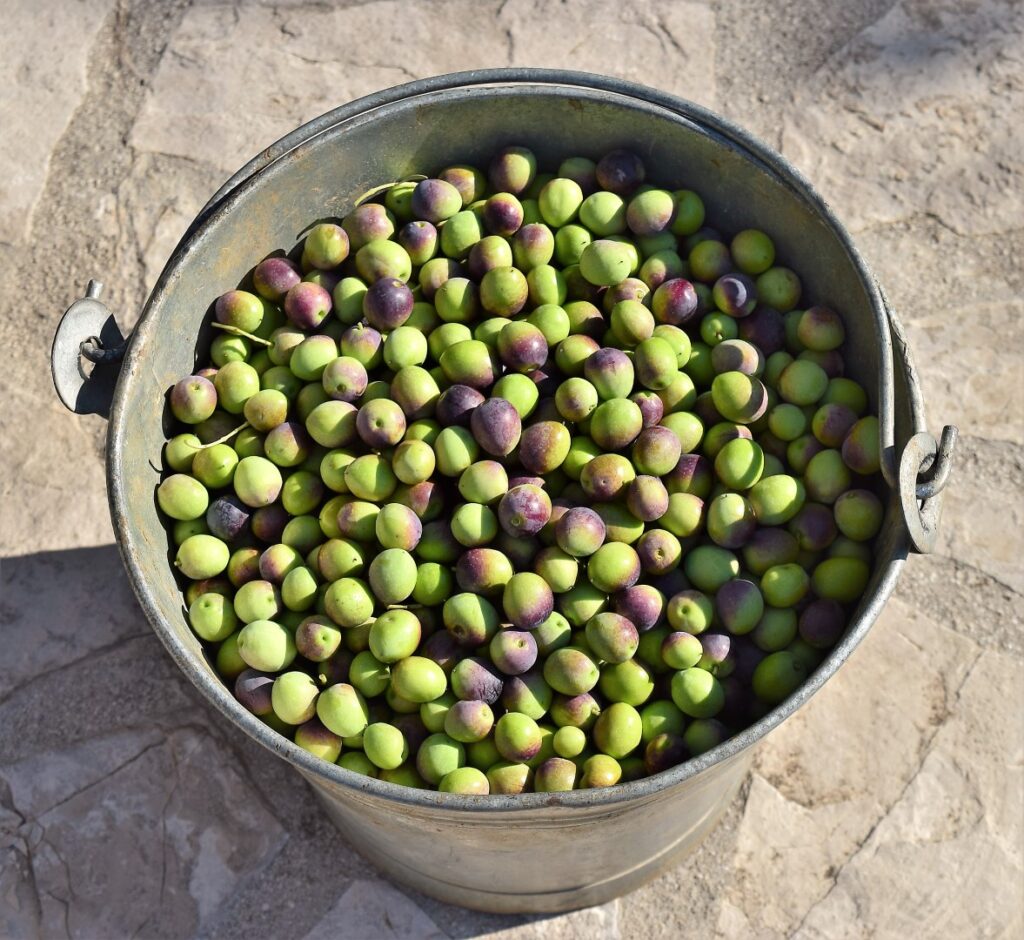
At the Olive Mill in Podgora for the pressing , 19th October 2021
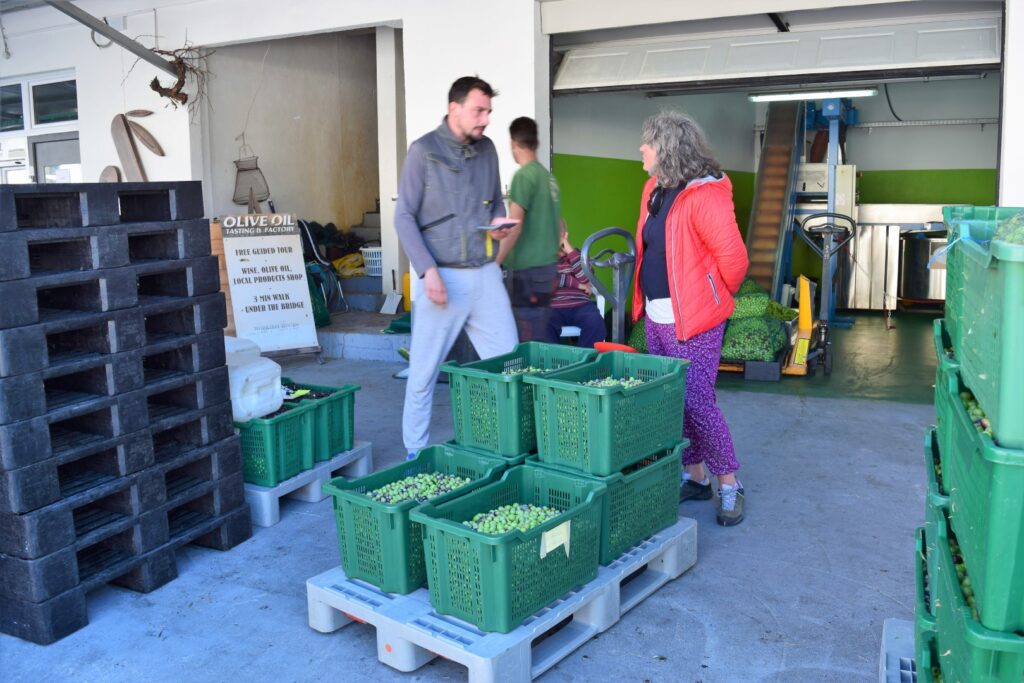
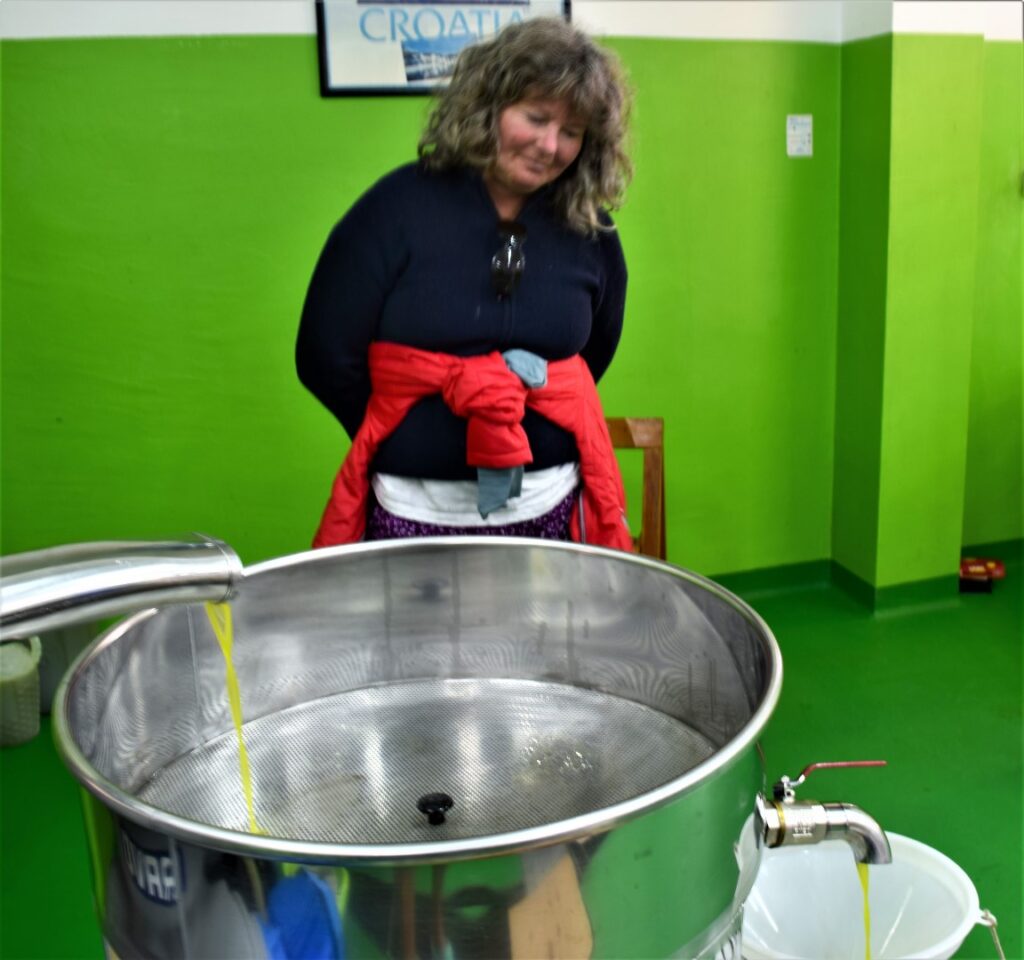
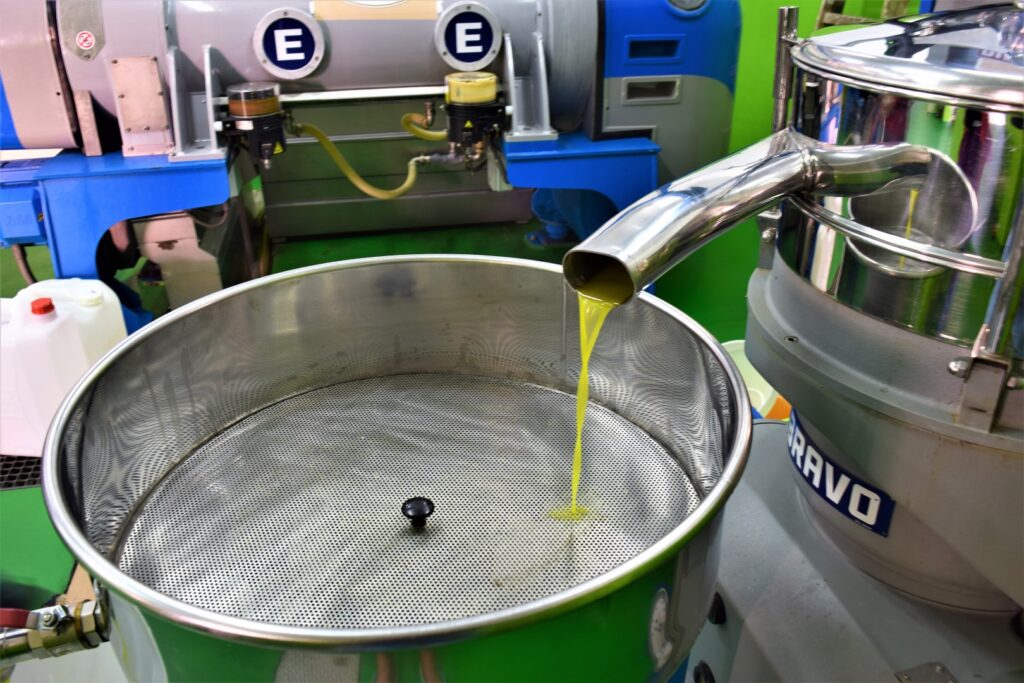
Paths are an essential part of garden design and are the last thing you should build in a garden as once they are down they are down forever and widening beds or planting areas afterwards is then not an option . In the West of Ireland , Mayo to be precise , conditions are very wet , wetter than is normal in Ireland which is saying something and at the moment the Tourist Board are funding new paths across a mountain bog as part of the Wild Atlantic Way project which is designed to attract tourists to out of the way places … a wildly successful initiative over the past ten years that has opened up areas of the West of Ireland which were up to now off the beaten track . The problem with a path through any bog let alone one in Mayo is that the major construction problem is deeply wet soil but this current project has gone back to a method first used by the Romans when building roads across ancient Britain in 50 BC … they dug down over a metre along the proposed path and lined the base with sheep wool a metre thick , trampled it down and then used rock as a base on top of the wool before finishing it off with gravel and the wool provided a floating base that didn’t sink .
Water logged ground is not a problem in Croatia , the opposite in fact being bone dry and stony so last month when I decided that the gravel garden design was complete and with a rough path set out for the past four years while I tried to establish the planting it was now time to build two permanent paths . I didn’t realise until I had it completed just how much a path finishes off a design and how it highlights the planting . I used small stone chippings and put down a layer over six inches deep and was really pleased with the result and you can judge for yourself from the before and after photos !
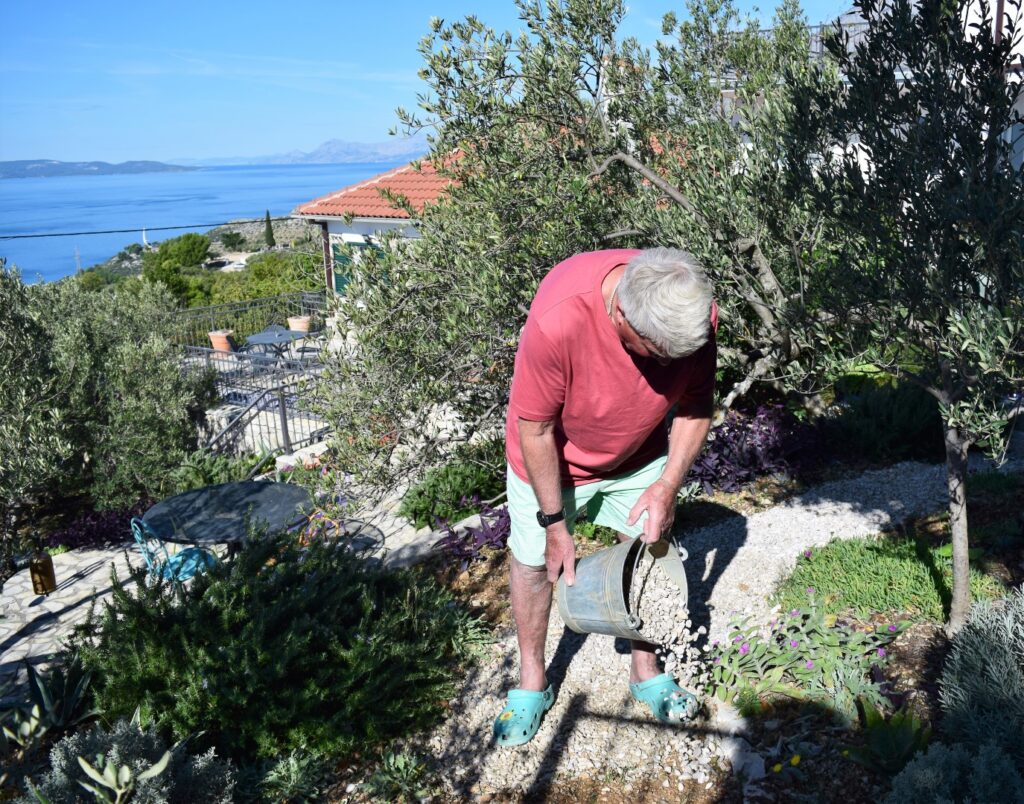
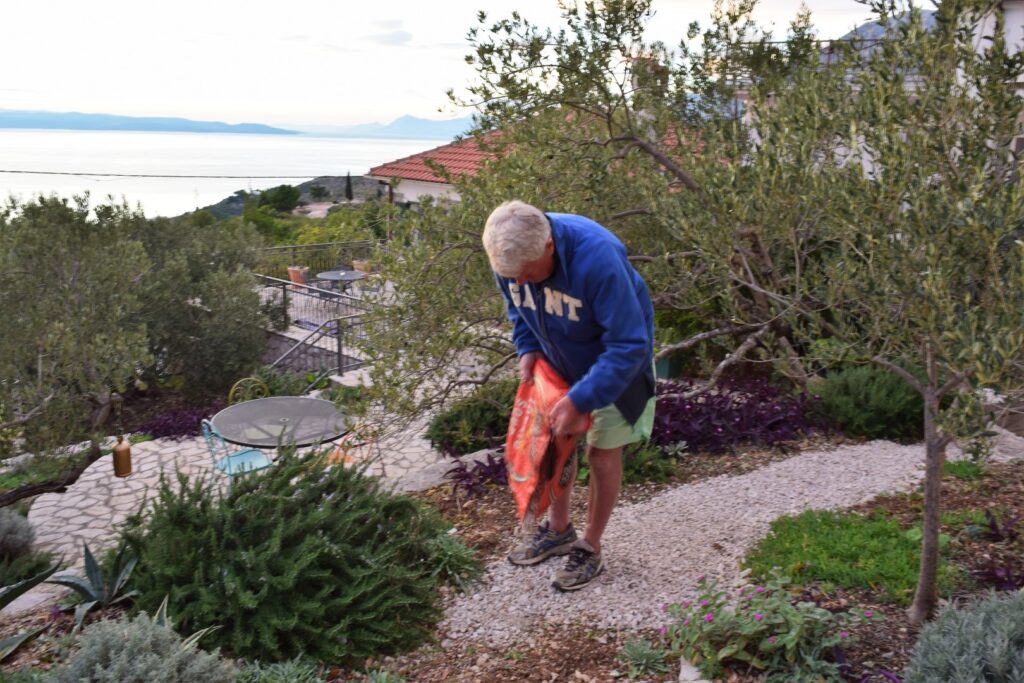
Before the path
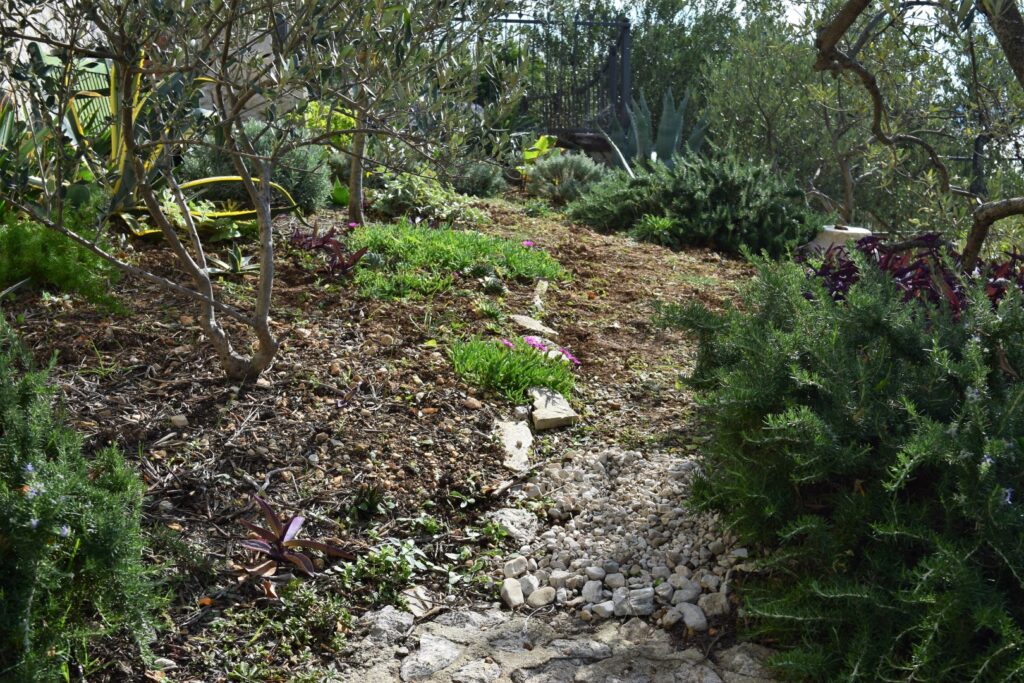
After laying the path October 2021
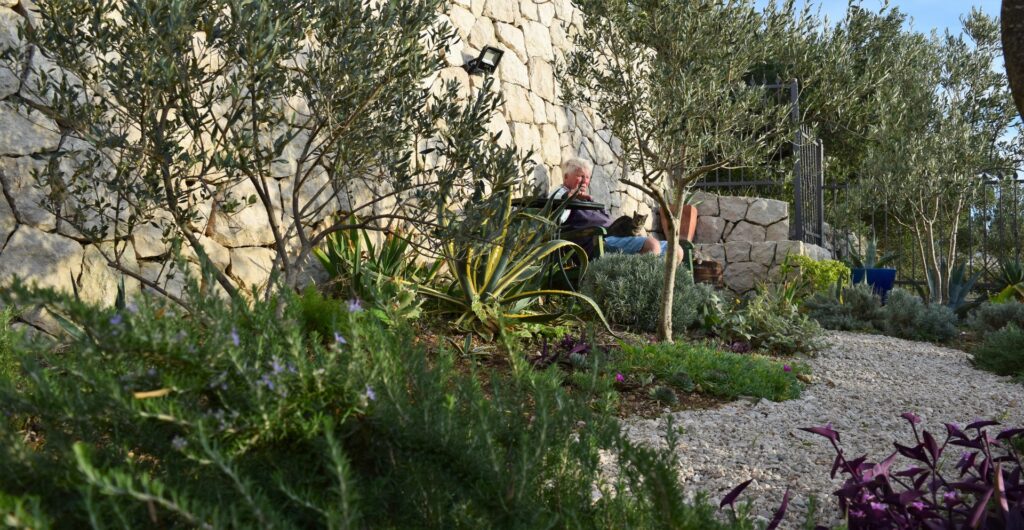
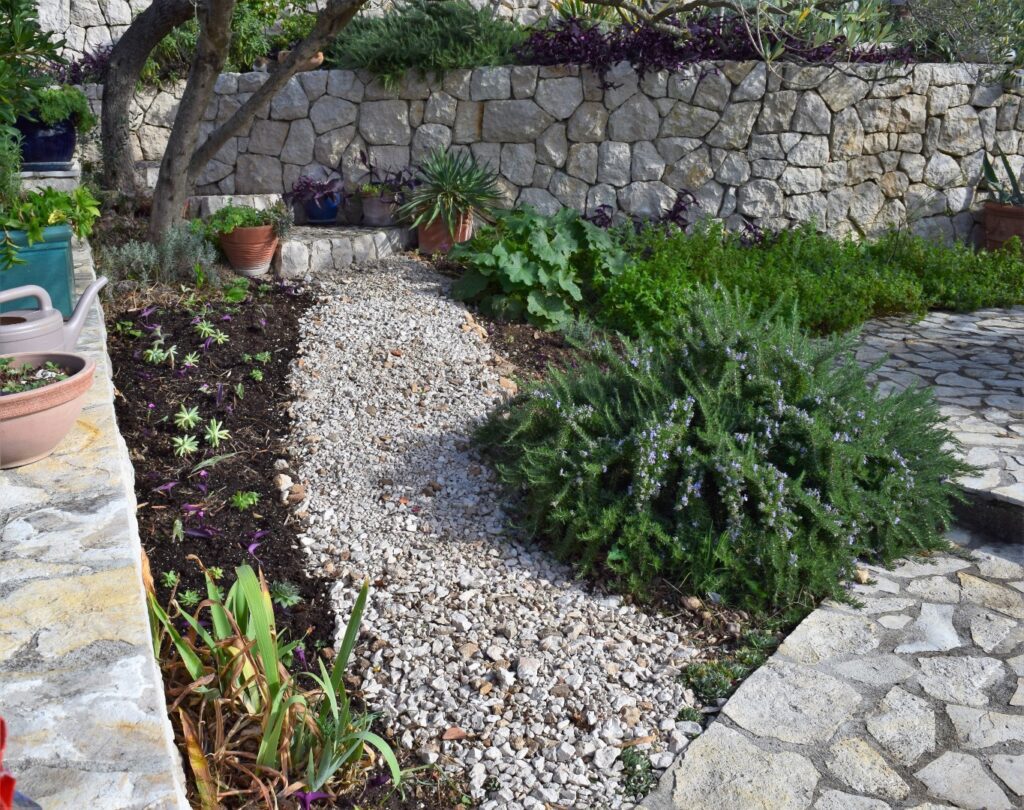
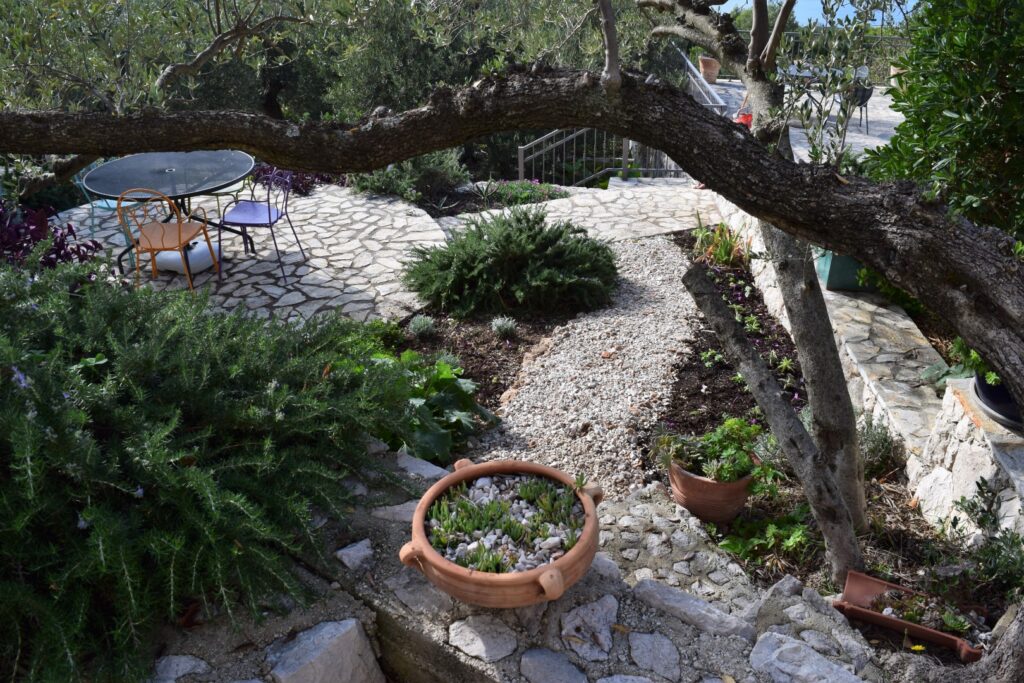


Leave a Reply